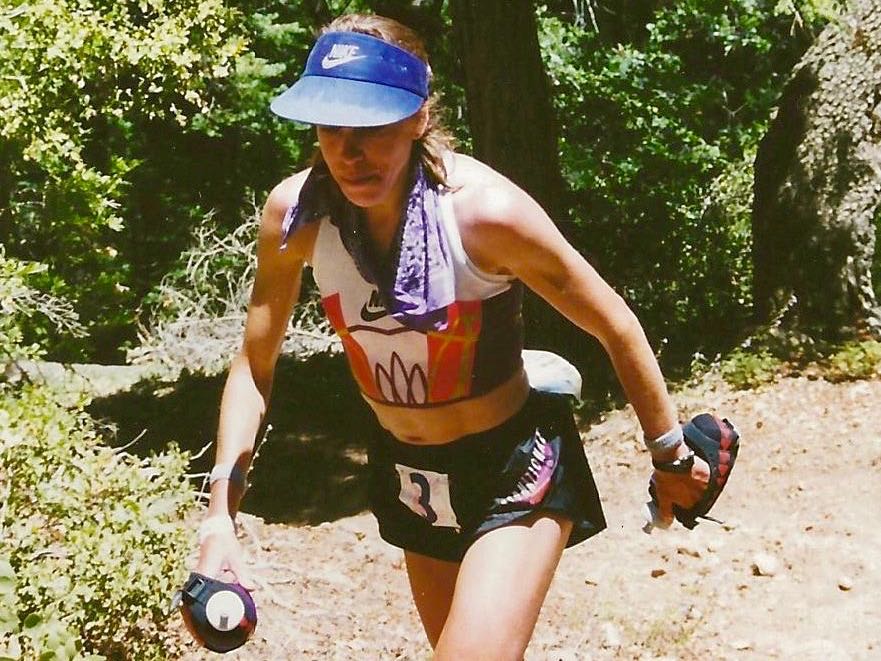 If you hang around ultrarunners for any period of time, you will quickly learn that we love our debates. What’s the toughest race you’ve run? The hottest? The most gnarly? The prettiest? Who’s better, East Coast or West Coast? Who’s more legit, road runners or trail runners? What’s the most unreachable course record in history? In truth, these debates are endless.
If you hang around ultrarunners for any period of time, you will quickly learn that we love our debates. What’s the toughest race you’ve run? The hottest? The most gnarly? The prettiest? Who’s better, East Coast or West Coast? Who’s more legit, road runners or trail runners? What’s the most unreachable course record in history? In truth, these debates are endless.
However, if you hang around a little longer and ask a few more questions of these debaters, you’ll realize that there are some things upon which we all agree. And, I dare say, toward the top of that list are the answers to these two questions:
- What year saw the toughest-ever conditions at the Western States 100?
- Who is the greatest female ultrarunner of all time?
So, in that context, I decided to put those two together and ask Ann Trason about what it was like to run the 1995 Western States.
Before we delve into that story, here are some details from the race that year:
- The winter of 1994 and 1995 saw a very large snowpack in California’s Sierra Nevada.
- The high temperature in Auburn, California on race day was 104 degrees Fahrenheit, the highest reading in race history.
- Due to snow, the course was altered to eliminate the high country Robinson Flat aid station and runners were rerouted onto a lengthy section of plowed, paved road.
- For the of two times in race history, the absolute cutoff was extended from 30 to 32 hours. The adjusted cutoff allowed an additional 28 runners to complete the course for a finishing rate of 53%. Had race organizers adhered to the traditional 30-hour cutoff, the race would have seen an all-time low finishers’ rate of 46%.
- 1995 saw the fewest-ever sub-24 hour finishers, 36, and the highest median finishing time, 28:15. (By comparison, the race’s ‘easiest’ year, 2012, saw a median finishers’ time of 24:48.)
Ann Trason, age 34, came into the 1995 race as the most accomplished female Western States runner of all time. Coming off a course-record run of 17:37 in 1994 as well as six-consecutive wins, Ann was not only the class of the women’s field but also a strong contender for the overall win. Her third-place overall finish in 1992 and her second-place overall finish in 1994 indicated that her form was such that an overall win was a distinct possibility. And Ann herself was very clear, “I was racing for the overall win that year and every year. It’s just what I did back then.”
However, life on the Western States Trail was not always so rosy for Ann. In her first two attempts at the distance, in 1987 and 1988, she was forced to drop out due to dehydration, stomach issues, and exhaustion. Reflecting on those drops in a conversation last week, Ann asserted, “Those two DNFs were the best things to ever happen to me. Not just in running, but in life. They simply proved to me that I had to fail in order to succeed.”
Ann has long had an almost mystical relationship with the Western States Trail. From the moment she set foot on the historic route from Squaw Valley to Auburn, she felt a bond, “I always believed that the trail would take care of me. That in that place I could be the best version of myself, even if I failed.”
Going into 1995, however, she was not planning to fail.
After the starting gun, on the climb out of Squaw Valley, within minutes, she took note of the sweat pouring off her brow. Knowing that 24 miles of icy, hardpacked snow lay ahead, Ann had to calibrate her effort and navigate a course that was, in many places, almost impossible to follow. A pair of Tarahumara runners stuck right to Ann’s heels and those of legendary 25-time Western States finisher Tim Twietmeyer through much of the snowpacked high country and by the time the group reached the pavement of Mosquito Ridge Road, the race was on.
“Running down the road was like running through a tunnel of snow as the snowbanks on the side were over 10 feet high. I just remember feeling like this may be my entire career in one day.”
Eventually, the snowbound high country gave way to the oppressive, record heat of Western States’s notorious canyons. During this infamous stretch through the middle miles of the course, Tim went off the front in a slight lead and Ann got some distance on the Tarahumara chasers. Ann felt a strong sense of anxiety through this section and noted, “I’ve always believed that a person’s true colors come out under stress and I was hoping my true colors would be good enough.”
At the river crossing (mile 78), which was serviced by boats due to the extraordinarily high water, Ann came into the aid station five minutes behind Tim and slightly ahead of the Tarahumara. However, within minutes, Gabe Bautista, the lead Tarahumara, blasted through the aid station and into the raft, overtaking Ann. Herb Tanzer, the grizzled Western States veteran who was working the Rucky Chucky aid station at the time, looked at Ann in that moment and screamed, “Don’t let him get in the raft without you!” And with that, Ann ran to the edge of the river and jumped in with Bautista.
“I was pissed. Why were they in such a rush!?” She quipped, years later with a smile. “I knew the climb to Green Gate was going to be a bitch and when we got to the other side, I just jumped out of the boat and started hammering. I vowed not to look back from that point on.”
After cresting the hill and making quick work of the Green Gate aid station, Ann moved well through the relatively smooth terrain on the way to Auburn Lake Trails. Knowing this section as well as she did, she knew that it was a place to make up time as it was one of the most runnable sections of the course. And, sure enough, when she rolled into the aid station at mile 85, Tim was still there, regrouping and refueling. On the way out of there, Ann and Tim worked together for a spell to put some more time into Bautista and by the time they reached the Quarry Road at mile 91, the lead felt comfortable.
On the lung-busting climb from the road to the Highway 49 crossing at mile 93.5, Tim pushed hard and opened a small gap on Ann, which ultimately allowed him to pull away for the win in 18:34:58. Ann fought a valiant fight and for the second time in three years finished Western States second overall, this time a mere five minutes and three seconds out of first place. To this day, her time is the closest a woman has ever been to an overall win at Western States and is also one of the top five closest overall finishes in race history.
After her incredible run in 1995, Ann went on to win Western States an extraordinary seven more times to give her a career total of 14 wins in 14 finishes. But alas, she would never get as close to the overall win as she was in 1995. Looking back on it today, Ann has no regrets. She continues to cherish the memory of her time on the Western States Trail and looks forward to returning to the race as a coach and volunteer for years to come. With a tone of nostalgia she notes, “The Western States Trail is in my blood, and will always be.”
Bottoms up!
AJW’s Beer of the Week
 This week’s Beer of the Week comes from the FiftyFifty Brewing Company in Truckee, California. Their DysFUNctional Pale Ale provides a unique take on this classic American variety. Hoppy but also sweet, DysFUNctional Pale Ale is a truly fun beer to drink, which, of course, it should be!
This week’s Beer of the Week comes from the FiftyFifty Brewing Company in Truckee, California. Their DysFUNctional Pale Ale provides a unique take on this classic American variety. Hoppy but also sweet, DysFUNctional Pale Ale is a truly fun beer to drink, which, of course, it should be!
Call for Comments (from Meghan)
Do you remember Ann Trason’s performance at the 1995 Western States 100? And do you remember the historic fire-and-ice conditions of the 1995 WS100? If so, leave a comment to share your memories. Thanks!

